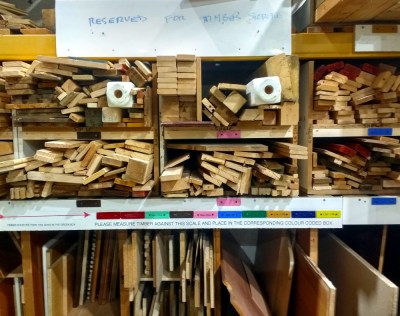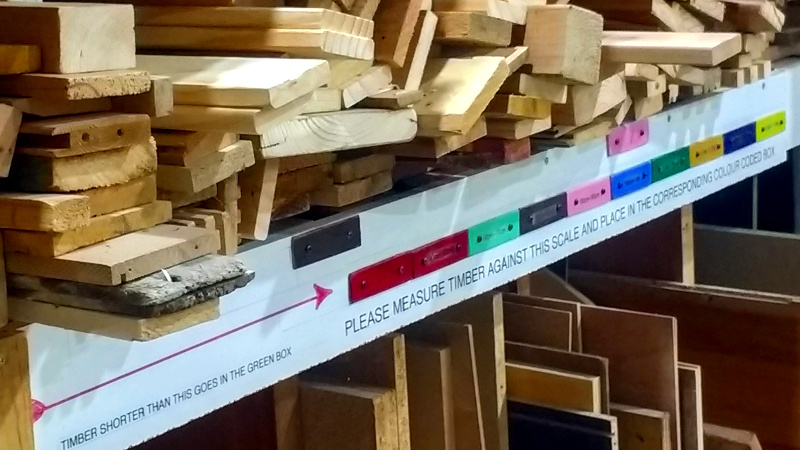As Hackaday writers we see the insides of as many hackerspaces as we can, and some of us make it our business to be members of more than one within reach of our homes. Thus it was that a simple but extremely elegant hackerspace lifehack came our way, courtesy of our friends at Milton Keynes Makerspace.
MK Makerspace have found a home within another group, the local MK Men In Sheds is a charitable organisation providing workshop and social space for hackers of an older generation. Together the two combine to offer both a huge range of experience and a comprehensive array of tools and machinery.

Woodwork is a strong component in the life of any Shed, and at Milton Keynes the Shed has been particularly successful in attracting donations of surplus timber. The stock of freely available mixed pieces of wood has almost everything you could wish for when working on casual projects, but despite continual sorting efforts had become an unmanageable pile among which it was often difficult to find the piece required.
Step forward MK Men In Sheds member [Ricky] whose solution was nothing short of inspired in its combination of simplicity and effectiveness. A large rack has compartments, each one of which has a coloured label. Along the front of the rack is a simple ruler calibrated in coloured blocks, and it is the work of a moment to offer a new piece of timber up to the ruler and place it in the compartment with the appropriate colour. Now any member with a need for a piece of wood can easily select an appropriate one, and return any usable offcut for easy selection by the next.
This may be a simple piece of work, but its value as a lifehack in a communal workshop is immense. It brings to mind a piece we published a couple of years ago, about how a vibrant hackerspace follows a good wood shop. Never a truer word was spoken for people of all ages.
















Problem working with colour blind people…
He could make some tactile codes in addition to color.
Just put the “60-70mm” text on the bins as well as the scale.
Or a big “A”, “B”, “C” or “D”. Still a really simple but clever idea.
Maybe they have no members that are colour blind ?
This reminds me of when communal towns, such as in Italy, used to host a ‘platonic form’ in the center of the town for tiles or bricks. Since medieval times I think, but this is an interesting application of an old standard.